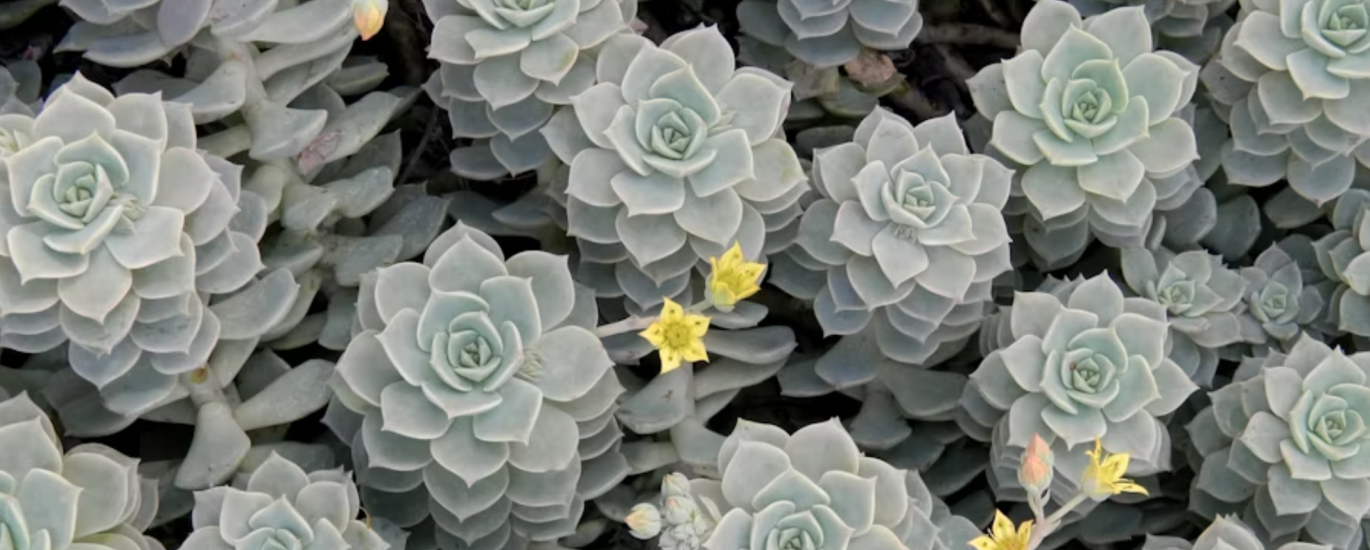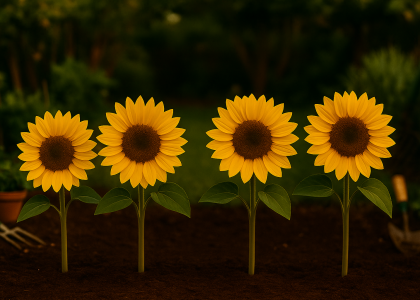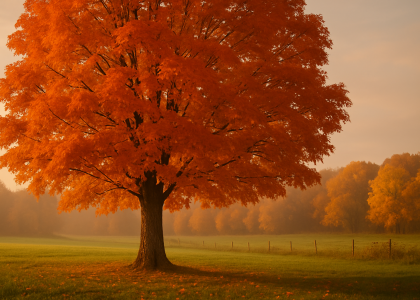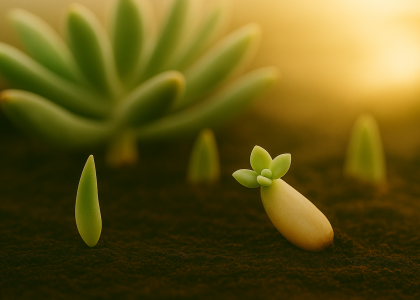A Visual Poem in Petals – Why Echeveria Belongs in Every Stylish Garden
Echeveria isn't just another houseplant. It's a living sculpture, a soft-spoken centerpiece, and quite possibly, the most photogenic succulent on Earth. With its flawless rosette form and pastel color palette, this Mexican native has captured the hearts (and Instagram feeds) of plant lovers worldwide.
Whether you're a beginner building your first indoor plant shelf or a seasoned collector looking for elegance with ease, Echeveria deserves a starring role in your botanical journey.
What is Echeveria?
Botanical Identity:
- Scientific name: Echeveria spp.
- Family: Crassulaceae
- Origin: Central America, predominantly Mexico
- Common Nickname: “Stone Lotus,” “Sculptural Succulent”
Echeveria species are characterized by their tight, symmetrical rosettes of fleshy leaves that appear in powdery blue, lavender, mint green, or coral pink—often tinged with red under full sun. There are over 150 known species and hybrids.
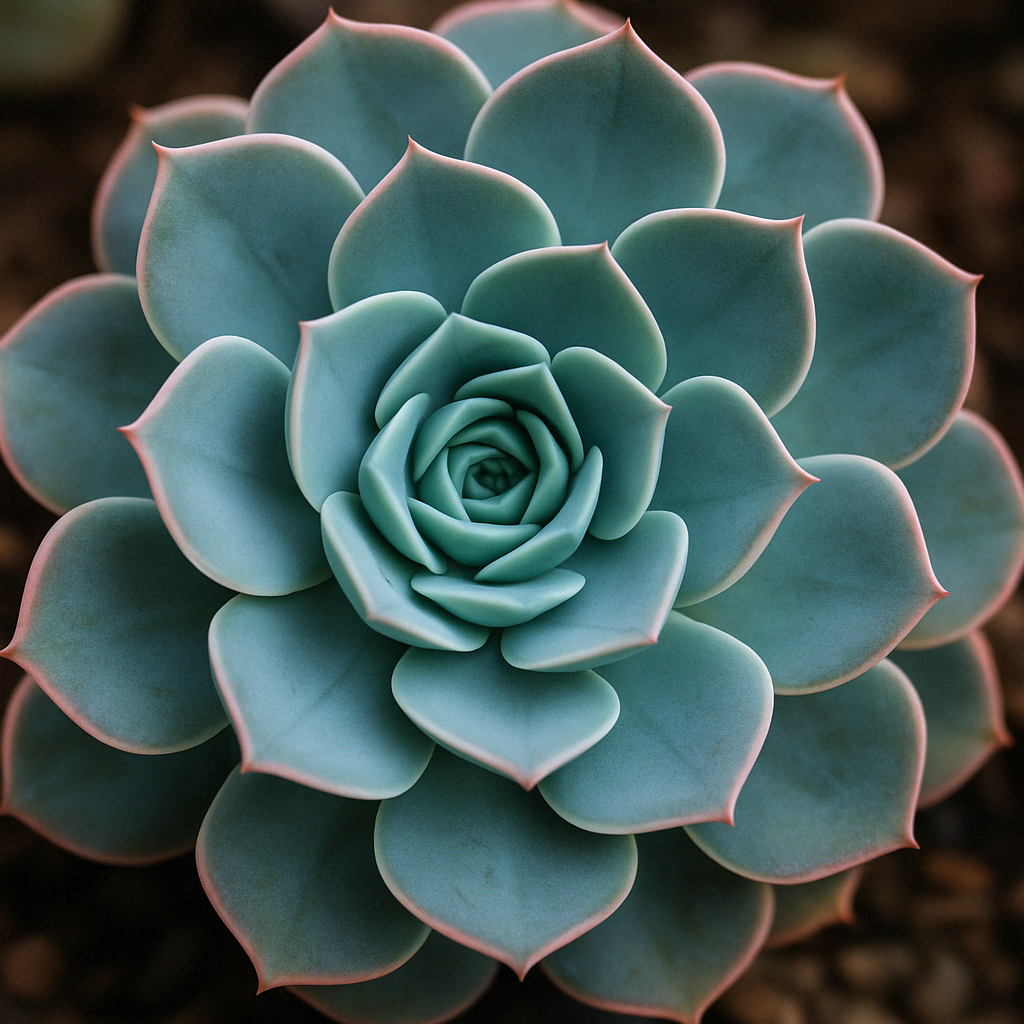
Why Echeveria is the Perfect Plant for Aesthetic Lovers
Target Keywords: rosette succulents, colorful echeveria, best indoor succulents, echeveria design ideas
✔ Photo-ready: Looks amazing from every angle—ideal for flat-lays and macro shots
✔ Minimalist-approved: Clean, architectural shape matches modern interiors
✔ Collectible: With hundreds of cultivars, you'll never get bored
✔ Mind-soothing: Watching the symmetry unfold is surprisingly meditative
Pair Echeveria with neutral-toned ceramics or reclaimed wood for a natural-meets-modern aesthetic.
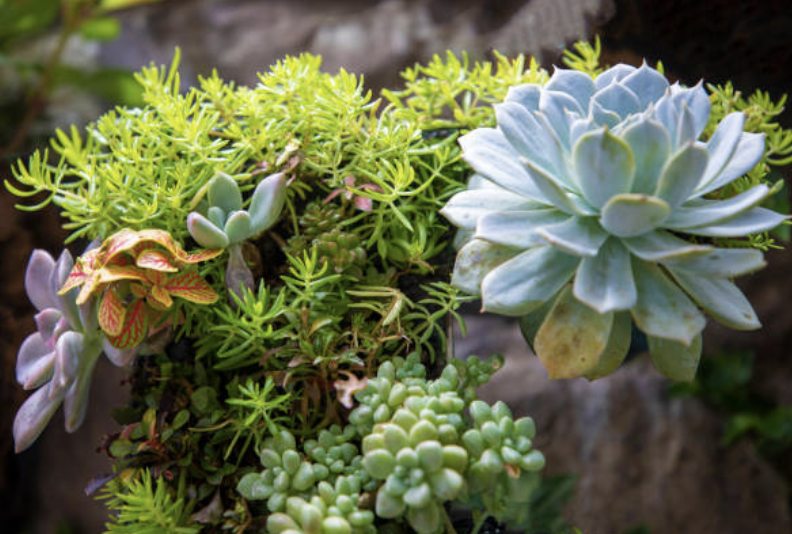
How to Grow Echeveria Indoors: A Beginner’s Guide
| Care Element | Recommendation |
| Light | Bright, indirect light. South/east windows are ideal. |
| Watering | Soak and dry method. Only water when soil is bone dry. |
| Soil | Well-draining cactus mix with perlite or pumice. |
| Humidity | Low humidity preferred. Do not mist leaves. |
| Temperature | 65–80°F (18–27°C). Protect from frost. |
Common Mistake: Never water into the center of the rosette. Water the soil directly to avoid rot.
Popular Echeveria Varieties
| Variety | Color | Size | Special Trait |
| Echeveria 'Lola' | Lilac-pink | Medium | Glossy pearl-like finish |
| Echeveria 'Perle von Nürnberg' | Lavender-gray | Large | One of the most photogenic |
| Echeveria 'Doris Taylor' | Green with white fuzz | Compact | Velvety texture |
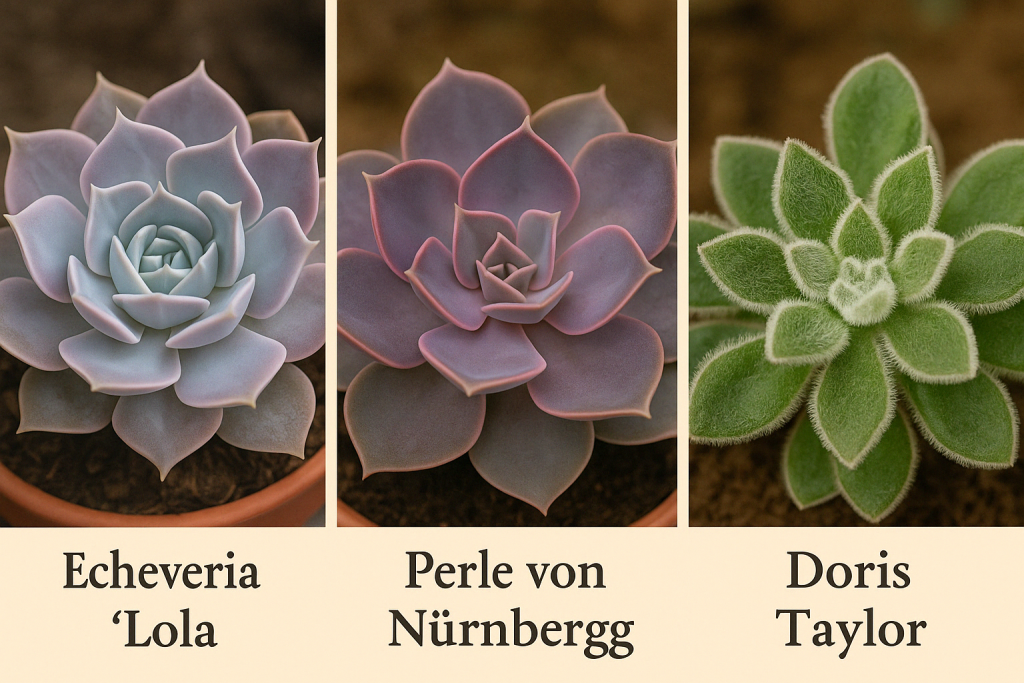
Echeveria FAQs
Q1: Why are my Echeveria leaves shriveling?
A: Likely underwatering or insufficient light. Water deeply, then wait for the soil to dry completely.
Q2: Can I grow Echeveria in low light?
A: They need bright light. Without it, they’ll become leggy and lose color vibrancy.
Q3: Do Echeveria bloom indoors?
A: Yes! In the right conditions, they send up flower stalks with bell-shaped blooms in late spring or summer.
Explore More Topics:
#EcheveriaCare #SucculentStyling #RosetteSucculents #IndoorPlantTips #SempervivumVsEcheveria #ColorfulSucculents
Click here to Download Echeveria Care & Styling Checklist
Styling Ideas for Your Echeveria
- Pastel trio centerpiece: Arrange three varieties in a shallow bowl on your coffee table.
- Zen shelf display: Combine with white stones and driftwood on a wooden tray.
- Solo spotlight: Place one Echeveria in a white ceramic planter for a sculptural touch.
Bonus Tip: Rotate the pot weekly to keep the rosette perfectly symmetrical.
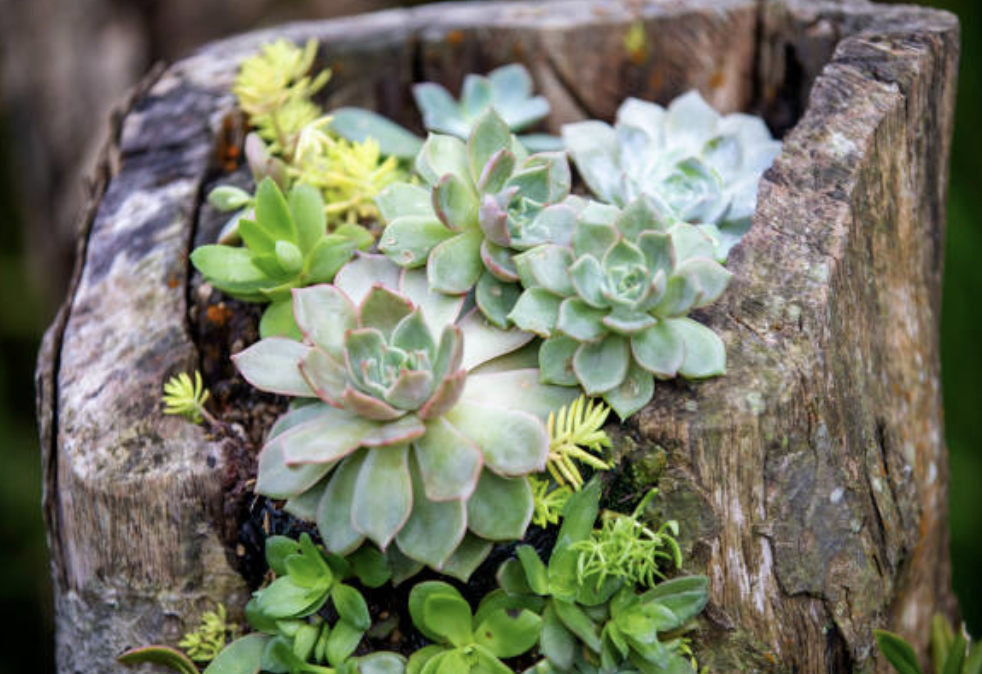
Final Thought: A Plant That Mirrors Balance
The Echeveria rosette isn’t just a plant—it’s a natural mandala, a reflection of balance, beauty, and minimalism.
So next time you’re drawn to that glossy monstera or trendy fiddle-leaf fig, pause and consider the timeless elegance of Echeveria. You might just fall in love with its quiet confidence.

